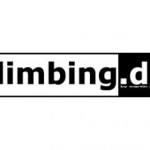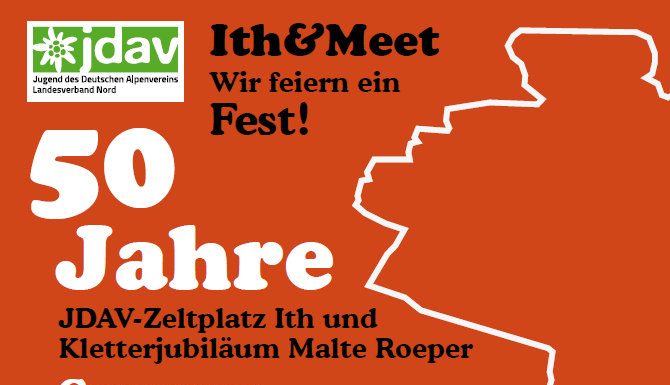Colin Haley and Bjørn-Eivind Årtun recently climbed a new route on Mount Foraker, Alaska. The route – now named Dracula – is a gigantic direct finish to an existing line called False Dawn and is perhaps one of the most significant new lines in the area for some time.Many teams have shown an interest in the huge unclimbed face, but have been deterred by potential serac fall on the lower part of the route coupled with the extreme length and technical difficulty of the upper rocky sections. The route is now graded M6R AI4+ A0, 10400'.Mark Westman is a Denali Ranger and one of the most experienced climbers in the range. I asked him for a bit of context on Colin and Bjørn's new route:“The route they climbed was a major and technical variation to a route called „False Dawn“, which was climbed in 1990. It climbs essentially the first 4000' of False Dawn then cuts up into the large rock wall on the right side of the French Ridge, where False Dawn continues up to the right on moderate snow/ice slopes. The entirety of the False Dawn route (and the first half of/approach to the new route, by extension) are extremely dangerous, threatened by active seracs from many directions. Going back ten years, numerous climbers including House, Garibotti, Varco, Parnell, Cool, and I think a few others have gone over there with thoughts of trying the rock wall but nobody wanted to risk the serac danger. While the rock wall appears to have offered some pretty good quality mixed climbing, I believe it is doubtful this line will see many attempts at a repeat ascent due to the objective hazards combined with the extreme size and commitment. Haley said they were in the „danger zone“ for over 2 hours, and he and Bjorn are a lot faster than most climbers especially since they carried no bivi gear, so most climbers would probably be under seracs for a lot longer.“
Colin Haley is a well known Alpinist with some very significant ascents to his name. Perhaps his most well known climb is the Torre Traverse which he made in January 2008 partnered by Rolando Garibotti. Other notable ascents include the first linkup of the Marsigny-Parkin and West Face on Cerro Torre in a 48-hr push, the first winter ascent of Mount Huntington (Alaskan winter climbing is a gnarly business) and the first ascent of House-Haley (VI, WI5, M7) on the Emperor Face, Mt. Robson, British Columbia.I dropped Colin a line and he agreed to answer a few questions about himself and his new climb:Mini Interview – Colin Haley on Dracula:Jack: Could you give us some personal info – who you are, age, home-town, employment? Colin: I am twenty-five years old, and I live in Seattle, in a hut in father's backyard. I make some money from sponsors, photos, writing and slideshows, but it is a meagre income. I'd rather live at the poverty line and climb a lot than live more comfortably and earn a decent wage. Jack: Your route follows an existing route for the first section before breaking off up some difficult mixed ground. I have heard that the first section is objectively quite dangerous. Would you agree? How did you minimise risk in this area?Colin: The first section of our climb, on the route False Dawn, is no doubt quite dangerous from serac hazard. In this section our single-push style was a big advantage for safety – We spent two hours and fifteen minutes in dangerous terrain, but would have easily spent more than twice that time if we were prepared with bivouac equipment for a classic alpine-style climb.Jack: How long were you on the route and how much did you carry – gear/food etc. Colin: We were out 71 hours (without any sleep!), and carried the absolute bare minimum to make it: We had two 250g isobutane canisters, 2 freeze-dried meals each, and each had a small selection of GU, bars, nuts and dried-fruit. For equipment we brought a single set of camalots, a single set of nuts, a few pitons, nine ice screws and two twin ropes. We had considered bringing only one rope, but I'm very glad we brought two, because in the end we made a few very steep, long rappels on the descent. Jack: Your partner on the Foraker route was Bjørn-Eivind Årtun. What's he like as a partner and can you see yourself teaming up with him again for more routes? Colin: Bjørn-Eivind is a great partner, and I'm sure we'll be teaming up again for other trips. He is a very talented technical climber on all types of terrain, and he is also extremely fit cardiovascularly. He has less alpine-climbing experience than I do, but he is quite smart and motivated so it is not a problem.
Jack: You have done some very impressive alpine routes, would you rank this as your hardest yet? Could you give us a brief comparison between this and some other routes?Colin: I still consider the Torres Traverse to be by far my best climbing accomplishment, and perhaps one that I'll never eclipse. However, the nature of the climbing in Patagonia is very different from that in Alaska and the Himalaya, so it is difficult to compare the two. Dracula is definitely my best climbing accomplishment outside of Patagonia.Jack: In your opinion what is the major line left to climb in world mountaineering? Colin: There are so many that it is ridiculous to focus on a few. In Alaska and Patagonia there are still plenty of faces that no one has yet been able to climb in alpine style, and in the Karakorum and Himalaya there are still hundreds of faces that no one has yet been able to climb in alpine style. However, I don't think there is any face in the world that would be a significant accomplishment today if climbed by siege tactics.Jack: Are there any other major new routes you have your eye on right now? Colin: Bien sur! But most of them are secrets!Jack: Thanks Colin, and good luck with your next expedition.To read Colin's full write up of his climb, with photographs, visit his blog: colinhaley.blogspot.com
Colin and Bjorn's trip was partially supported by a Mugs Stump Award and the Norwegian Alpine Club (NTK). Diesen Artikel inkl. Bilder auf UKClimbing.com anschauen



![[VIDEO] Irmgard Braun: Record Breaking Rock Climber Who Gets Stronger Every Year Irmgard Braun: Record Breaking Rock Climber Who Gets Stronger Every Year (c) Hannah Morris Bouldering](https://www.climbing.de/wp-content/uploads/2025/11/youtube_MpAJEENfEjg-218x150.jpg)

![[VIDEO] The Challenge – Steve McClure The Challenge - Steve McClure (c) Petzl Sport](https://www.climbing.de/wp-content/uploads/2025/11/youtube_mfK9ynVsDvI-218x150.jpg)
![[VIDEO] Silence 9c/5.15d – The journey begins for Will Bosi Silence 9c/5.15d - The journey begins for Will Bosi (c) William Bosi](https://www.climbing.de/wp-content/uploads/2025/11/youtube_ujb7YRfE-7k-218x150.jpg)
![[VIDEO] Yosemite Crack Testpiece: Connor Herson on Magic Line Yosemite Crack Testpiece: Connor Herson on Magic Line (c) Fusis Films](https://www.climbing.de/wp-content/uploads/2025/10/youtube_h4GEt5iSZpA-218x150.jpg)
![[VIDEO] Hardest Trad Flash Ever | Adam Ondra | Lexicon E11 Hardest Trad Flash Ever | Adam Ondra | Lexicon E11 (c) Mammut](https://www.climbing.de/wp-content/uploads/2025/06/youtube_SAUyrDLG5xM-218x150.jpg)













